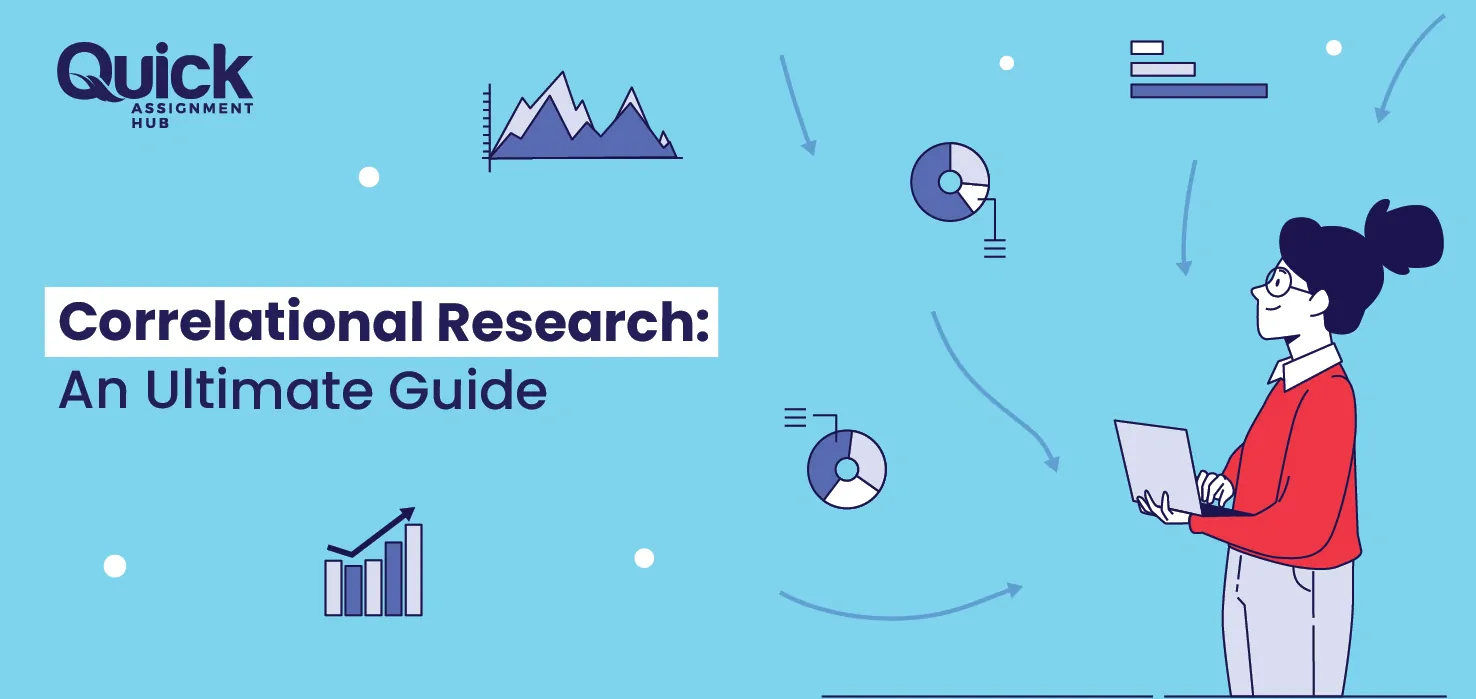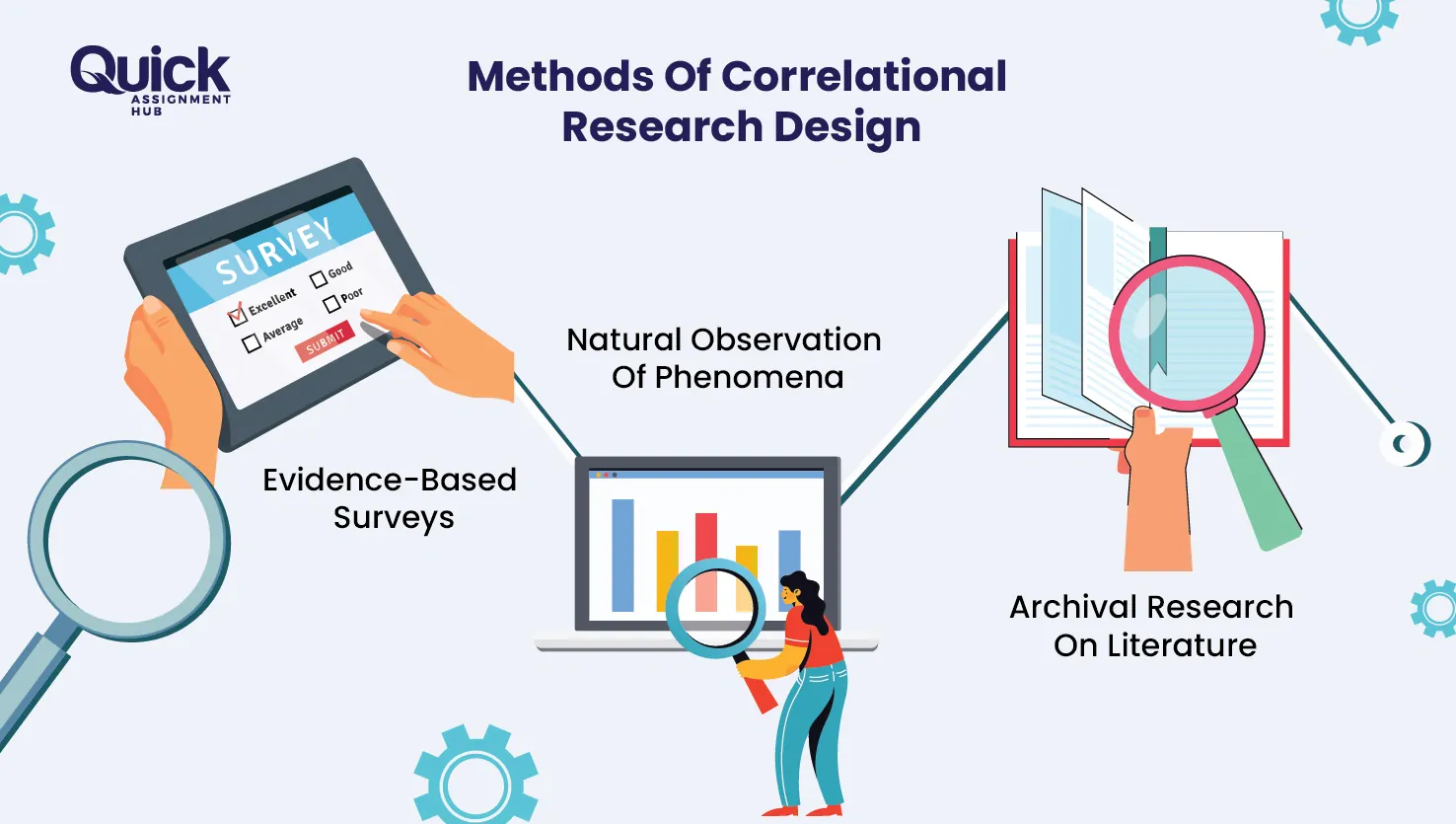
Looking to comprehend the correlation research in depth? Then this blog is going to be your ultimate guide. Discover how correlation research helps you reach the desired result of your study. This is a magnificent tool for researching psychological phenomena with utmost prominence.
Everything has been explained here in detail, from the correlation coefficient to the advantages of correlation research, so that you can grasp this research concept best. Moreover, explore the types and methods of correlation research profoundly here to ideally incorporate them into your research paper. So, waste no time and let's dive into this blog.
Correlational research is a study that helps you examine and define the relationship between variables. This research explicitly does not let you manipulate the variables in any way. Most importantly, it is a non-experimental study that can be performed with observations and understanding. This type of research aims to detect specific patterns and identify the connection between the variables.
A correlational coefficient is a numerical value used to interpret the correlation between two variables. This unique number defines the strength and quantifies the evident variable's relationship. It also demonstrates the possible direction of the relationship. The most widely recognised correlational coefficient is the Pearson Correlation Coefficient, which is denoted as (r). It is a statistical measure that ranges from -1 to 1.
There are some definite types of correlational research depending on their principles. So, let's find out what those types are below.
Positive Correlation: Positive correlation refers to when all variables change together. It can be both increased and decreased to a particular measure. This correlation occurs when variables shift in the same direction. It suggests that both variables increase or decrease, depending on their relationship.
Negative Correlation: A negative correlation happens when variables move in opposite directions, such as when a variable increases, the associated variable decreases. This correlation can be identified as an Inverse Correlation as well. This correlation is precisely the opposite of a positive correlation.
Zero Correlation: This correlation can also be known as no relation. It defines the relationship between the variables as having no connection. For example, there is zero correlation between human intelligence and their shoe size.
Correlational research design is the process of identifying the relationships between given variables. You need to understand that multiple things are associated with a correlational research design. Let's explore them one by one below.
To identify the relationship between the variables, you must conduct data analysis. It involves the interpretation of the correlation coefficient by calculating it with the right measure.
Moreover, two different types of analysis are present when defining the variables' relationship. These two types can be identified as statistical techniques. Both of them are further explained below.
This type of analysis is a primary process for evaluating the relationship between variables. Summarising the variables' relationship into one correlation coefficient is appropriate.
With this type of analysis, you can understand the change in the variables. More precisely, you can predict the association of those changes. Moreover, the result you derive from this analysis creates a regression equation. This equation helps you estimate a particular variable's value depending on others' values.
If you want to conduct better correlation research in your academic paper, you can try online Research Paper Help.

There are three different methods associated with correlation research design. These are data collection methods that help you in your research.
This method requires observing a phenomenon or behaviour in a natural environment. It is a part of field research in a broader sense. This method suggests that you need to categorise, describe, count and record the event or actions. Moreover, this method is appropriate for generalising your results for a better outcome.
This method of correlation research involves using questionnaires. It helps you measure the variables of your study. This method is straightforward and quick. Furthermore, it is a flexible option if you want to collect data from many participants. However, be sure that all your questions are unbiased and informative.
This method demands that you conduct research by exploring existing data that others have collected. You need to analyse the data from databases or historical records. You can consider all kinds of secondary data for this method of correction research design.
There are some definite pros and cons in correlational research that you need to know to grasp this concept fully. Understand them more in-depth below, so you know every aspect of this research.
Let's first talk about the advantages of correlation research and how they help you obtain your results.
Predictivity: Correlational research helps you predict the values of variables depending on the other variable's values. This predictive power is crucial to determine the relationship between variables that lead to better results.
Cost-effectiveness: This type of research is the most cost-effective solution for analysing data. It is less expensive compared to experimental research. Moreover, there is no involvement of costly equipment in conducting this research.
Time Efficiency: The third advantage of this research is that it can be done quickly. You do not have to dedicate much time to this research design. So, its time efficiency is a factor that heavily influences researchers to choose this research.
Now it is time to know what the cons of correlational research are. By knowing this, you can decide whether this research design is suitable for your research paper.
Absence of Causation: One limitation of correlational research is that you cannot define the cause of the relationship between variables. There can be various other factors that influence or impact the relationship. Moreover, correlation research does not provide definite answers about cause and effect.
Possibility of Misinterpretation: In this research, the correlations are misinterpreted. Misinterpretation further leads to the wrong conclusion, which impacts the overall result or outcome.
Limited Information: Another limitation of correlational research is that it provides minimal information about the correlation. Without enough information, the reasons behind the variables' relationship cannot be defined, which is a prominent disadvantage.
Knowing the pros and cons of correlational research is crucial because you need to evaluate whether you want to proceed with this research design when writing your research paper. You are advised to consider these aspects before you choose this research design.
Your First Order
Get 20% OFF!
"What is correlational research?" - That was your question. By now, you have gathered all the valuable insights and information regarding the correlation research that answers this question on point. With this guiding blog, you can readily write your academic research paper by applying the correlation research. However, if the concepts of correlation research are still unclear to you and you further want an expert's contribution, then you can rely on Quick Assignment Hub. Our PhD experts are well-versed in any type of research that is suitable for your academic paper. They are excellent at obtaining the best and accurate results that will help you get higher grades. Moreover, your research paper will be backed by proper evidence that will impress your professor. So, connect with our experts on our website for further queries about your research paper.